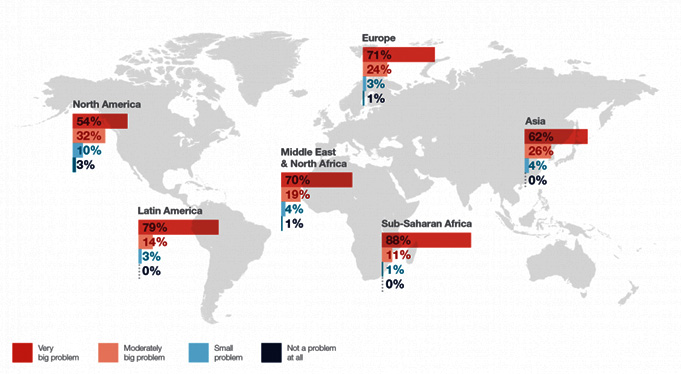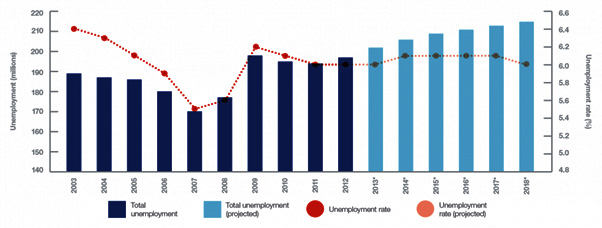Jobless growth a threat to National Security?
April 20, 2017 | Expert Insights
Poverty, corruption, terrorism and insurgency are some of the key issues facing the country. Apprehensions about India heading towards a jobless growth is major concern that should not be over-looked. What is jobless growth? What impact does it have on the economy? Does jobless growth pose any other form of threat to India? These are questions that need to be addressed in the light of mounting tensions & growing unemployment in the country.
Jobless growth refers to the phenomenon in which a country’s economy amplifies significant growth while employment rates remain stagnant or decelerates rapidly. If we consider data on workers aged 25 to 54, the quintessence of any workforce, we find that the percentage of unemployment is rising constantly. China, a country which enjoyed a double-digit growth in its economy has seen manufacturing employment decline steadily over the last twenty years. The same can be observed in case of other developing countries including India and Brazil.

Figure 1- Pew Research Center Global Attitudes Project, 2014
Statistics show that the Sub-Sharan African countries had been most affected by jobless growth by approx. 90% followed by Latin American Countries at 79 and Asia at 62 per cent.

Figure 2 - ILO, Trends Econometric Models, October 2013
Figures from the Labour Bureau suggest that in the year 2015, India created only 1,35,000 jobs in comparison to 4,93,000 in 2014 and a high of 12,56,000 in 2009. The labour force on the other hand has shown a growth of over 10 million. The annual employment growth in India during the 2004-12 period was reported to be only 0.5 percent in comparison to the labour force growth which was at 2.9 percent. Despite this disparity, the gross domestic product has been growing annually by over 7 percent in the past few years. In the long run such a skewed economic growth may prove to be detrimental to India’s overall inclusive growth and development. When rate of unemployment rises in an inverse proportion to GDP, it may lead to various socio-economic issues such crime & terrorism resulting in threat to national security.
It might be pertinent to discuss John Dollard’s Frustration-Aggression theory which primarily states that aggression is the outcome of frustration. When youth of a country are unemployed, the feeling of disappointment may lead such a person to express his anger through violence that will be directed on those he holds responsible or people who are directly or indirectly related to them, largely the government. In India when there is growth in the labour force and a decline in jobs, the frustration level of the unemployed could grow at alarming rates resulting in subsequent chaos and violence.
It has been historically proven that unemployment leads to national security crisis. The Arab spring and January 25 Revolution demonstrated how unemployment can lead to both violent and non-violent demonstrations in Egypt & across the middle-east. The Kouchi brothers in Paris are amongst the best examples to prove that unemployment is a major contributor to radicalisation.
In India, the Naxalite and Maoist insurgency in the red corridor may be due to distrust, unemployment and lack of infrastructure in the affected regions. In the North-Eastern states insurgency is of great concern as well since there is rise in the number of unemployed youth crossing borders to train in Myanmar’s terror camps. The Jatt and Patel riots in State of Haryana and Gujarat show how communities and caste based groups are demanding for special status and class certificates to ensure their job security.
It is imperative that the issue of jobless growth is addressed with the highest priority to provide a more inclusive society, thereby ensuring that national security concerns are fully met.


